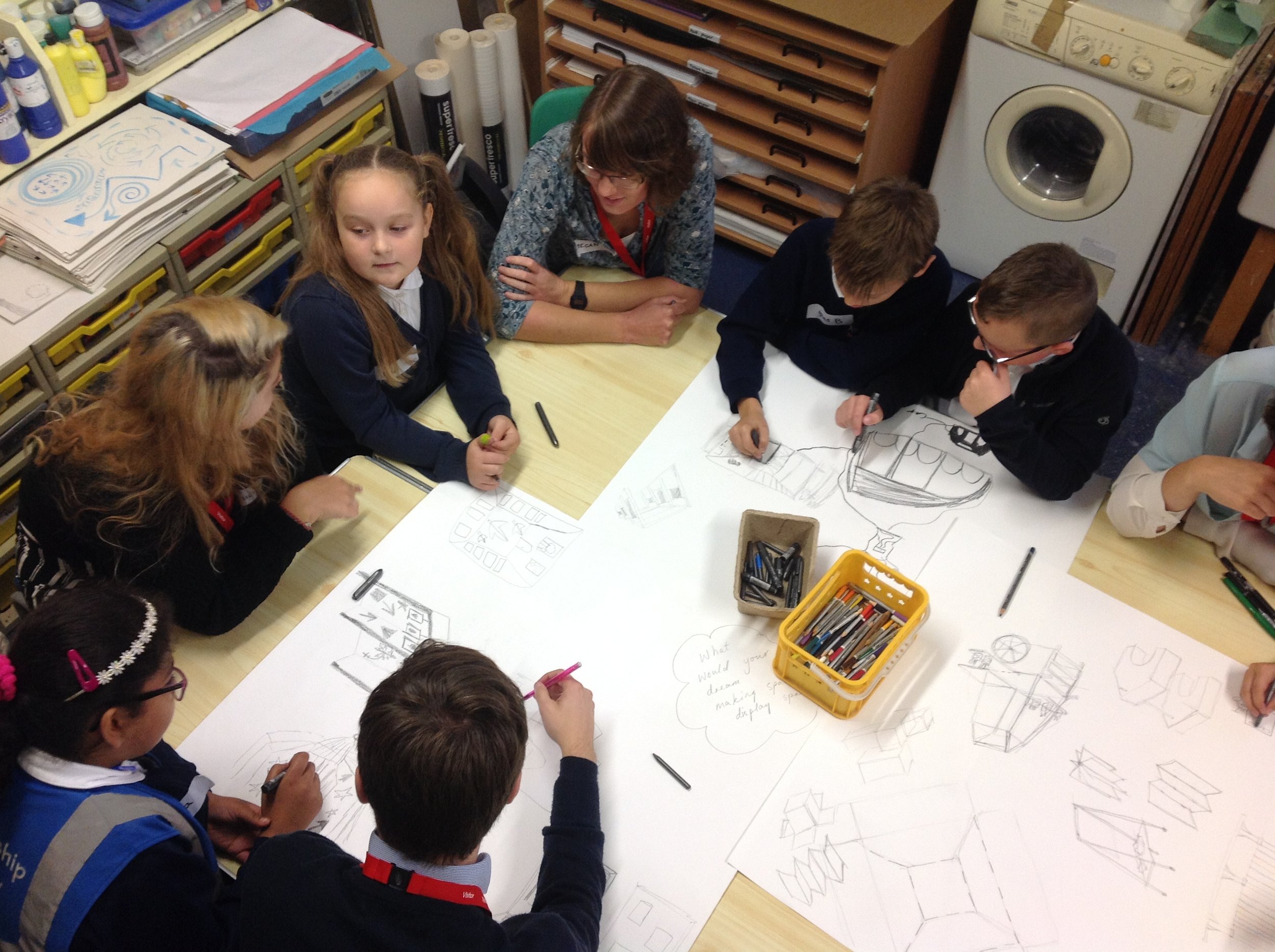LITTLEMEAD PRIMARY ACADEMY
Research aim: Can architectural interventions encourage the inclusion of art and creativity in all subjects at Little Mead Primary Academy?
THE TEAM: Michael Hancock, Alice Hewitt, Philippa Fairburn, Alexi Chomyszyn, Megan Peeks
UWE Architecture students were commissioned by Little Mead Primary Academy to collaborate with the school’s resident artist and year 5 students to help propose architectural interventions around the site that encourage a creative syllabus. These were envisioned to take the form of gallery spaces, art workshop studios, and creative interactive art displays.
The project took the shape of a series of collaborative workshops in which the architecture students, and the primary school students explored architectural ideas through making and drawing, as well as other forms of media. The workshops started out more broadly, by sketching out initial ideas and brainstorming on paper, but slowly narrowed down to proposing a variety of solutions, as well as focussing on locations for intervention. Once initial ideas were proposed, they were developed three dimensionally by physical model making as well as digital model making, which was a useful vehicle for testing the interventions scale, form, materials and colour. To include the end users into the design process, a school notice board and voting system was created so that all members of the school could have their say in what they thought was the most plausible solution.
The next steps of the project is to generate a funding proposal application to the University of the West of England and seal funding to build the interventions.
Output: Process document, Proposals document, Prototype display space, Presentation, Exhibition
Activities: Creative art workshops with year 5 students, Drawing and sketching, Model making, Notice board, Exhibition, School voting consultation
Materials used: Drawing and sketching materials, model making materials, Computer aided design software
Lessons learned: We believe that art, learning, and creativity can be enhanced throughout the various subject syllabi at Little Mead Primary Academy by the inclusion of architectural interventions specifically designed to nurture creative thinking.
What is the future of the project? The next step for the project is to make a funding application, or conduct fundraisers, to help raise funds to pay for the interventions proposed.
A reflection on the project: Upon reflection with Lucy Pedlar, our client, we discussed how we felt the project went. At the beginning the brief was very open and this allowed us to explore all the potential for the whole school. The freedom, however, meant our direction was split – resulting in the design manual which outlines a total of five proposals. In the short eight week project it wasn’t achievable for us to explore all options and to progress one to completion. This meant we had a shared feeling of not achieving a physical impact within the school; instead we produced a feasibility document which will hopefully become a catalyst that can be used to do so. With some funding, some more time and with detailed drawings we should be able to take the initial proposals further.
We have agreed two future dates to meet with the school this year and early next year. The purpose of these meetings is to discuss funding options. The aim is to achieve a grant from UWE through the Community Fund scheme, which we will apply for by April 2019. We would all love to see one of the proposals progress further than drawings on paper.
Every Thursday afternoon we enjoyed attending the school for workshops, almost like an ‘Architecture Club’. To begin with it was a challenge working with younger children, quickly we learnt how to act and speak with the primary school students. Somewhat, it was a struggle to use appropriate terminology with the children, with words such as ‘intervention’, ‘graphic design’...etc. We understand the educational benefits of our involvement and therefore these words would have been manageable if they had been explained in context. We often had to switch between addressing differing audiences, especially as the Year 5 students were essentially our clients, along with Lucy Pedlar, and the head teachers.
Our vision was
“To work with the students of Little Mead Primary Academy to enhance the creative environment of the school through a series of interventions & improvements”
Therefore one of our main aims was to interact with the children, to enhance their education through art. Our impact can’t just be judged on the physical design impact on the school, but also on the intangible impact on the children’s, and teachers’, perspective of art. After having worked with the six Year 5 students for the duration of the project we asked for their feedback. With some highlights including:
● One student asked for an art set for his birthday as a consequence of his grown interest after the workshops.
● Several have shown their desire to become an architect.
● They all greatly enjoyed making models, designing with their hands.
● A girl has even subsequently downloaded SketchUp and has quickly picked it up.
Michael Hancock, Alice Hewitt, Philippa Fairburn, Alexi Chomyszyn, Megan Peeks











